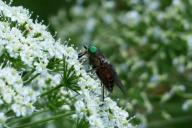Textured surfaces, such as textured walls, ceilings, or furniture, can be more prone to collecting dust due to their uneven and often porous nature.
Regular cleaning and maintenance can help keep these surfaces looking fresh and minimize the buildup of dust.
Here's what you can do.
Dusting Routine
Establish a regular dusting routine.
Depending on the level of dust accumulation, you may need to dust textured surfaces weekly or bi-weekly.

Use a soft, lint-free microfiber cloth or a duster with long, flexible fibers to reach into the crevices of textured surfaces.
Vacuuming
Use a vacuum cleaner with a soft brush attachment to gently vacuum textured surfaces.
Avoid using a high-powered vacuum setting, as it could damage the surface or spread dust around.
Compressed Air or Blower
For hard-to-reach areas or intricate textures, you can use compressed air or a blower to dislodge dust.
Dry Cleaning Tools
Microfiber dusting mitts or gloves can be worn to easily wipe down textured surfaces, effectively picking up dust and debris.
Cleaning Solutions
For areas with stubborn dust or dirt, you can dampen a cloth with water or a mild cleaning solution (such as a mixture of water and a small amount of dish soap) and gently wipe the surface.
Lint Rollers
Lint rollers with adhesive sheets can be useful for quickly picking up dust and lint from textured surfaces.
Regular Air Circulation
Proper air circulation and ventilation can help reduce the accumulation of dust on textured surfaces.









